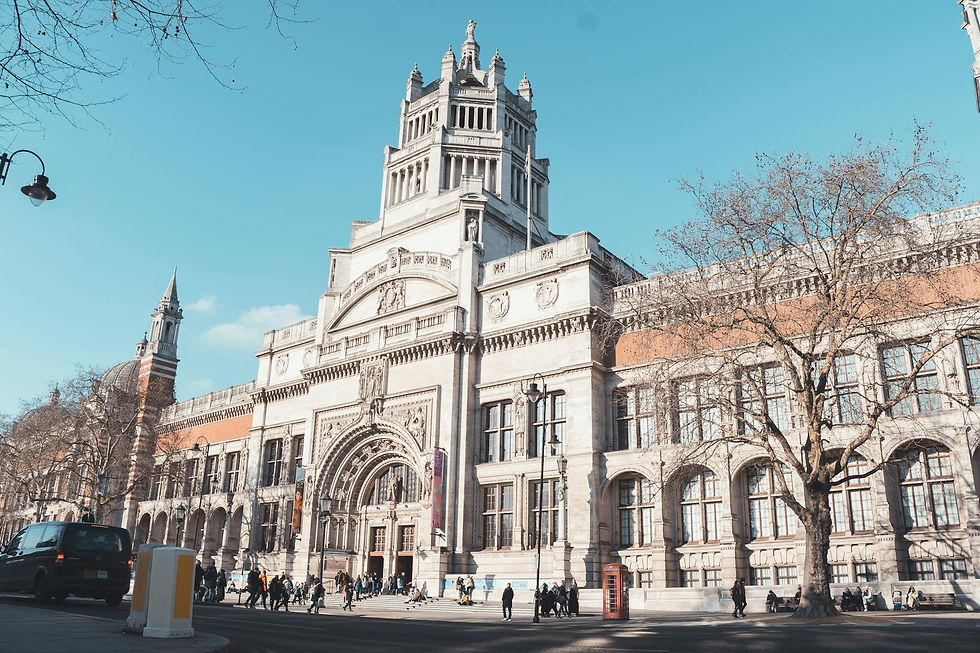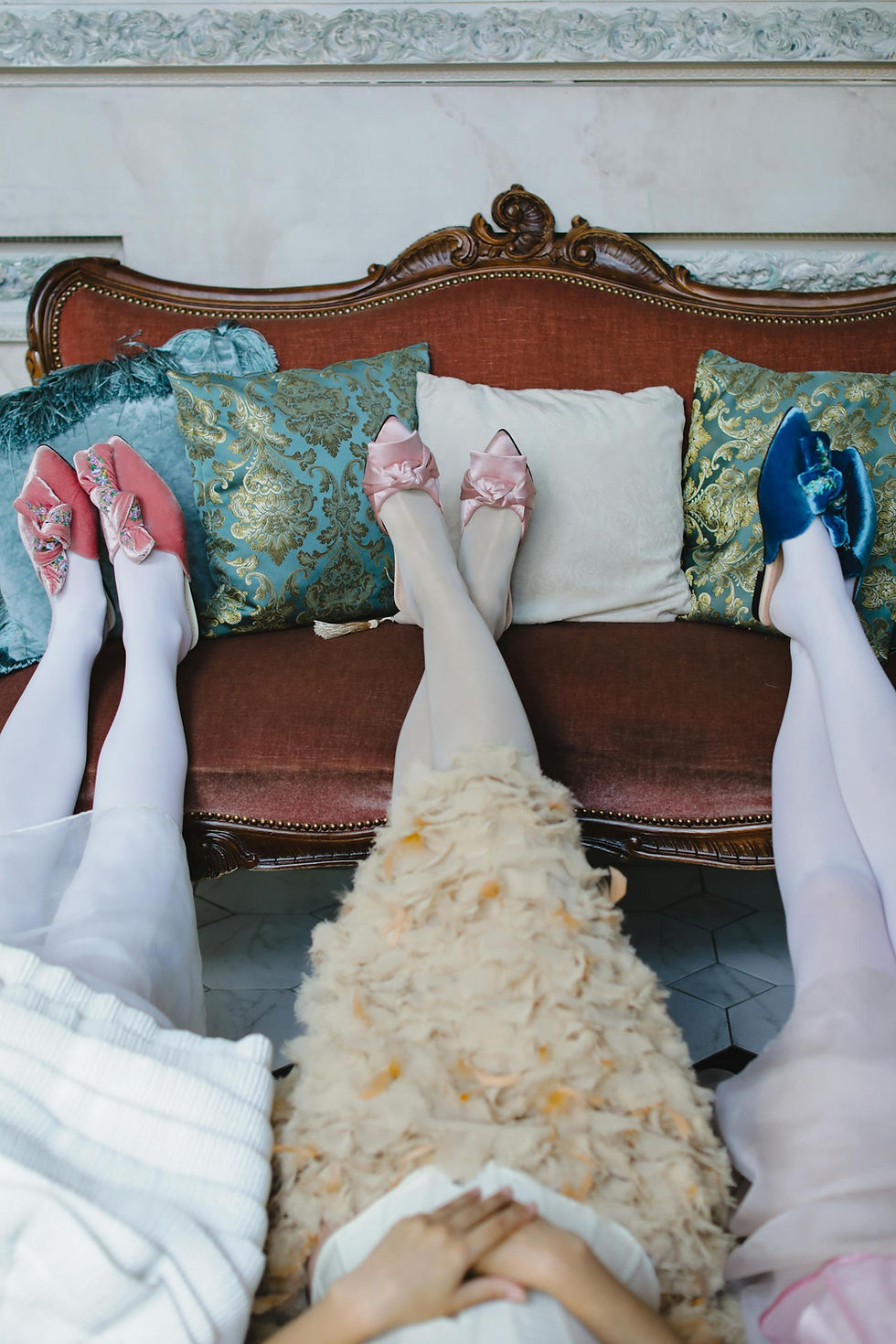Marie Antoinette Style – Victoria and Albert Museum, London, UK
- Jeffrey Allen

- Aug 23
- 5 min read
From September 20, 2025, to March 22, 2026, the Victoria and Albert Museum (V&A) in London presents Marie Antoinette Style, a lavish exhibition exploring the enduring influence of France’s iconic queen on fashion, design, and cultural imagination. Known for her elegance, audacity, and iconic tastes, Marie Antoinette (1755–1793) continues to captivate designers, artists, and historians. This exhibition provides an immersive journey into the sartorial legacy of a monarch whose style helped define an era and whose influence persists in contemporary couture, luxury design, and popular culture.

The exhibition features a remarkable collection of garments, accessories, jewelry, portraits, and decorative arts, drawn from royal archives, private collections, and museum holdings around the world. Visitors are transported into the opulence of the late 18th century, exploring how Marie Antoinette’s distinctive aesthetic reshaped fashion in Paris and reverberated across Europe. From the delicate pastel gowns of her youth to the extravagant robes de cour of her queenship, each piece reflects her attention to detail, flair for innovation, and the intricate artistry of French court dress.
A central focus of the exhibition is Marie Antoinette’s revolutionary approach to fashion. Unlike many monarchs of her time, she cultivated an image that combined refinement, femininity, and theatricality, establishing trends that would be emulated throughout European high society. Visitors can explore examples of her signature silk gowns, intricately embroidered with floral motifs, lace, and ribbons, highlighting her preference for color, texture, and layered detailing. These ensembles illustrate not only the grandeur of court attire but also the personal taste of a queen deeply invested in her public persona and self-expression.
The exhibition also examines the creative collaboration between Marie Antoinette and her court designers, particularly Rose Bertin, her pioneering milliner and dressmaker. Bertin’s work was instrumental in realizing the queen’s aesthetic vision, translating ideas into garments that balanced artistry, elegance, and the spectacle of royal presentation. Through letters, sketches, and surviving garments, the exhibition reveals the close dialogue between monarch and designer, offering insight into the processes behind some of the most celebrated fashion of the 18th century.
Accessories and jewelry occupy a prominent place in the exhibition, demonstrating how Marie Antoinette used adornment to extend her personal style beyond dress. Elaborate headdresses, jeweled combs, and delicate gloves exemplify the integration of clothing and ornamentation, reflecting the queen’s mastery of visual storytelling and the performative aspects of court fashion. These objects also highlight the technical skill of artisans in embroidery, metalwork, and gem-setting, underscoring the sophistication and labor-intensive craft that characterized the French luxury industry of the period.
Portraiture is another compelling element of Marie Antoinette Style. Paintings by artists such as Élisabeth Vigée Le Brun provide intimate glimpses of the queen’s personality and her evolving fashion choices. These portraits are not merely historical records—they are performative, carefully composed narratives in which clothing communicates power, identity, and aspiration. Visitors can analyze how the queen’s gowns, hairstyles, and accessories contributed to the cultivation of her public image, blending political symbolism with personal taste.
Beyond historical garments, the exhibition highlights Marie Antoinette’s influence on later fashion and design. Contemporary designers, including those in haute couture, have drawn inspiration from her silhouettes, ornamentation, and theatrical approach to dressing. The exhibition juxtaposes historical attire with modern interpretations, demonstrating how her aesthetic continues to inspire creativity, innovation, and luxury design. Visitors see how corsetry, pastel palettes, voluminous skirts, and intricate detailing have been reimagined in contemporary fashion collections, bridging centuries of style.
The V&A enhances the visitor experience with immersive displays that evoke the atmosphere of the French court. Elaborate set designs, ambient lighting, and multimedia presentations recreate the drama, color, and grandeur of Versailles, allowing audiences to experience the scale and spectacle of 18th-century court life. By contextualizing the garments within their social, cultural, and political environment, the exhibition deepens appreciation for both the artistry and historical significance of Marie Antoinette’s style.
Marie Antoinette Style also delves into the interplay between fashion and identity, exploring how clothing shapes perception and communicates social status. The queen’s wardrobe was more than a collection of beautiful garments—it was a strategic tool that signaled authority, taste, and alignment with cultural trends. Through clothing, accessories, and portraiture, visitors witness how the queen negotiated her public image, navigating the scrutiny of the court, the press, and the populace, while simultaneously expressing personal aesthetic sensibilities.
The exhibition further explores how Marie Antoinette’s fashion choices intersected with politics and public perception. Extravagant gowns, elaborate hairstyles, and striking accessories often provoked admiration, envy, or critique, influencing public opinion and reflecting broader social tensions in pre-revolutionary France. By examining these dynamics, visitors gain insight into the complex relationship between clothing, power, and perception, and the enduring fascination with style as a marker of influence and identity.
Educational programming at the V&A complements the exhibition, including guided tours, lectures, workshops, and design-focused events. These offerings provide visitors with opportunities to engage deeply with the historical, aesthetic, and cultural significance of Marie Antoinette’s style. Workshops on 18th-century embroidery, textile techniques, and costume design allow attendees to explore the craftsmanship that underpinned her wardrobe, while lectures contextualize her influence in both historical and contemporary fashion discourse.

London’s cultural and lifestyle offerings make visiting Marie Antoinette Style an immersive experience. Guests can stay in luxury hotels such as The Ritz London, Claridge’s, or The Savoy, enjoying accommodations that mirror the elegance of the exhibition. Fine dining experiences, from Michelin-starred French restaurants to artisanal patisseries, complement the visual indulgence of the exhibition, allowing visitors to engage with French-inspired gastronomy. For those seeking a full cultural weekend, nearby galleries, theaters, and architectural landmarks provide context and continuity to the themes explored in the exhibition.
One of the most compelling aspects of Marie Antoinette Style is its capacity to connect past and present. Visitors are encouraged to consider how historical fashion informs contemporary luxury design, haute couture, and popular culture. From the revival of corseted silhouettes in runway shows to reinterpretations of pastel palettes and ornamental embellishments, Marie Antoinette’s influence persists, underscoring her status as a perennial muse for designers, stylists, and artists.

The exhibition also emphasizes the international reach of her aesthetic. While Marie Antoinette’s life unfolded in the courts of Versailles, her stylistic influence crossed borders, shaping European fashion trends and inspiring designers across generations. Visitors can trace these currents, observing how her legacy continues to inform fashion capitals, from Paris to London to New York, and how her approach to dressing resonates with contemporary audiences seeking refinement, elegance, and theatricality.
In conclusion, Marie Antoinette Style at the Victoria and Albert Museum offers a sumptuous exploration of the queen’s enduring influence on fashion and design. Through garments, accessories, portraits, and multimedia displays, visitors gain a comprehensive understanding of her aesthetic vision, her strategic use of dress, and her impact on both historical and contemporary style. The exhibition illuminates the intersection of art, identity, politics, and luxury, reminding audiences that fashion is never merely decorative—it is an instrument of expression, a medium of power, and a reflection of cultural values.
For fashion enthusiasts, cultural travelers, and history aficionados, this exhibition presents an unparalleled opportunity to experience the elegance, drama, and creativity of one of history’s most iconic figures. Marie Antoinette Style is a masterclass in the artistry of dress, the performance of identity, and the enduring power of style to shape imagination and influence culture.
For more information and to plan your visit: Victoria and Albert Museum
Header Photo Credit: cottonbro studio https://www.pexels.com/photo/legs-of-women-in-period-costumes-9790411/










Comments